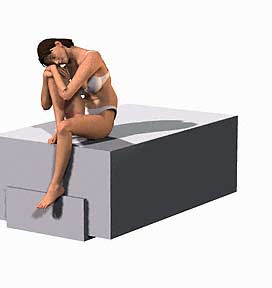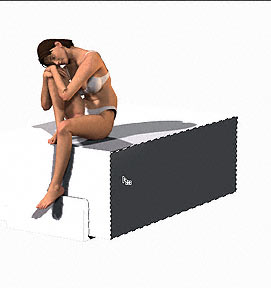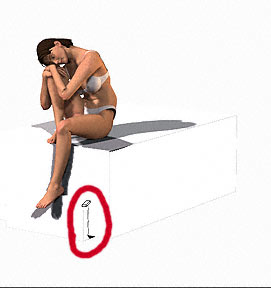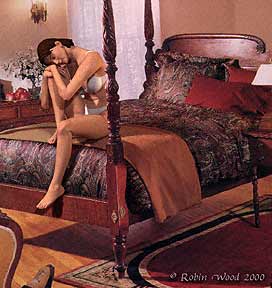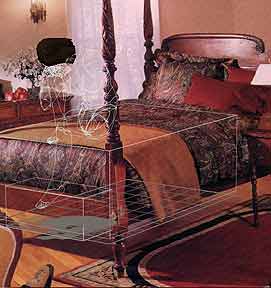
But what if you just can't get it?
Well, sometimes you can't. That's because photographers often crop their photos, and use cameras that are much more sophisticated than the one inside Poser and so on.
So, in those cases, do the best job you can; but don't make yourself nuts.
The most important planes to match are the ones that the shadow will actually be lying on. In this example, I could match the top of the bed, and sides pretty well. But the line of the bedpost isn't exact. I'll just have to live with it. The finished piece won't show that line anyway.
Notice that since the figure is sitting on an object, I've used cubes to represent those objects and take the cast shadows. That's how that bit is done! <g>

